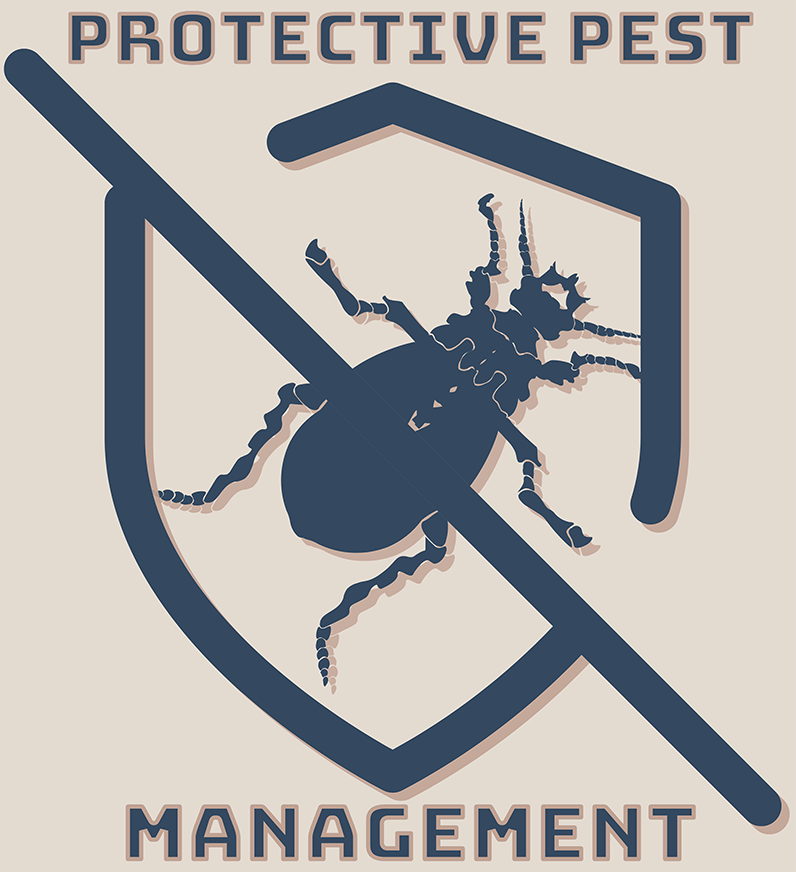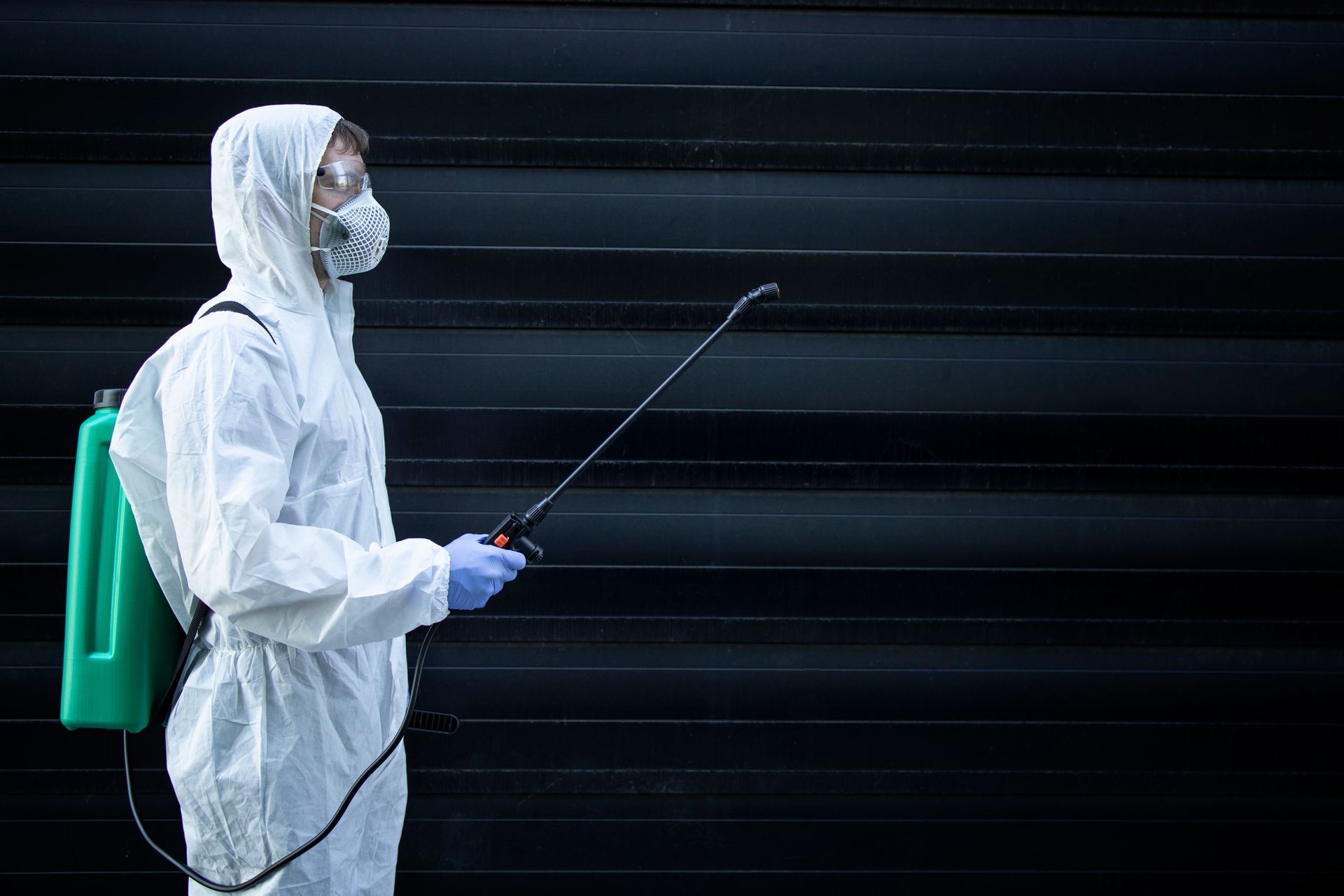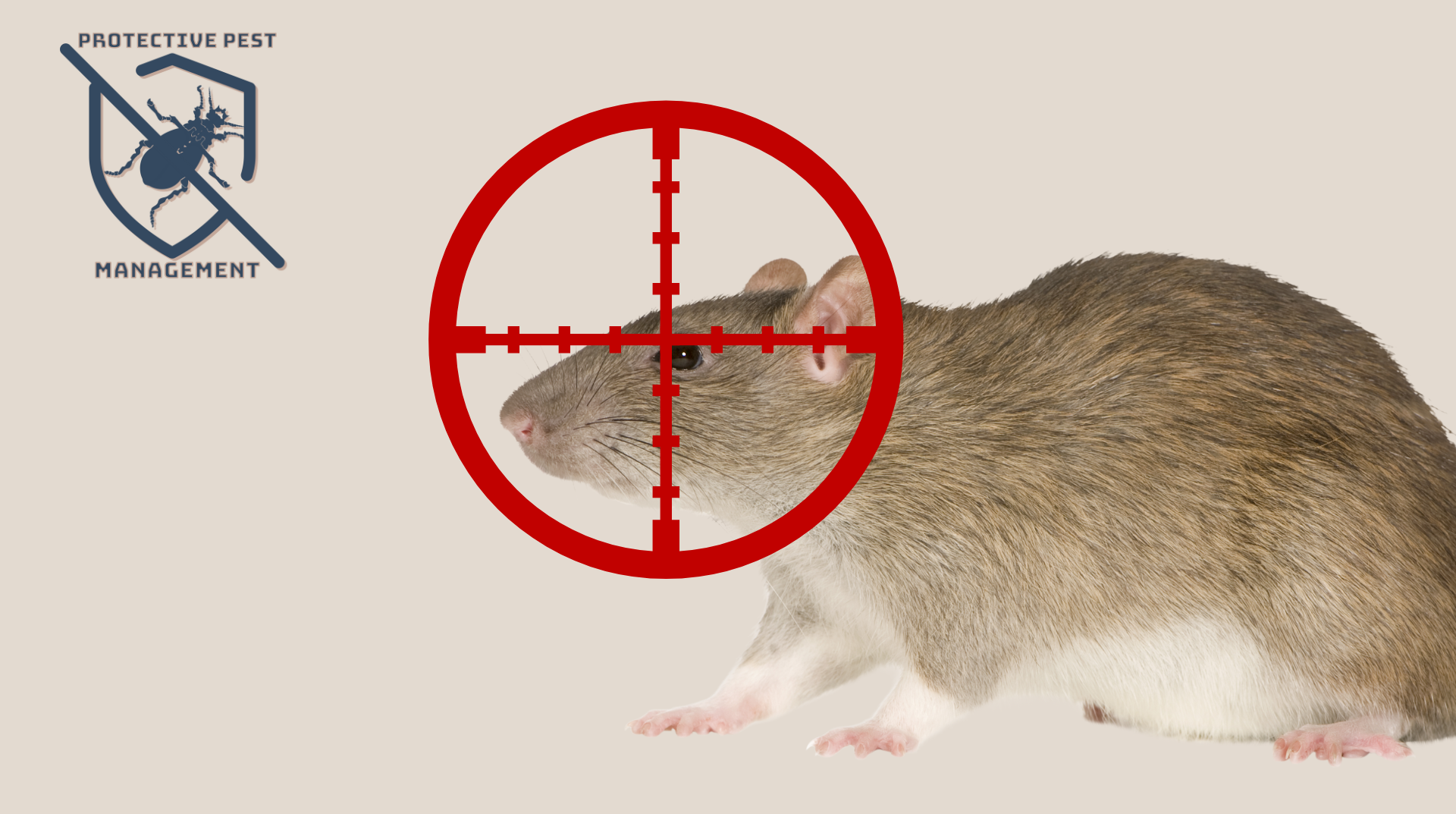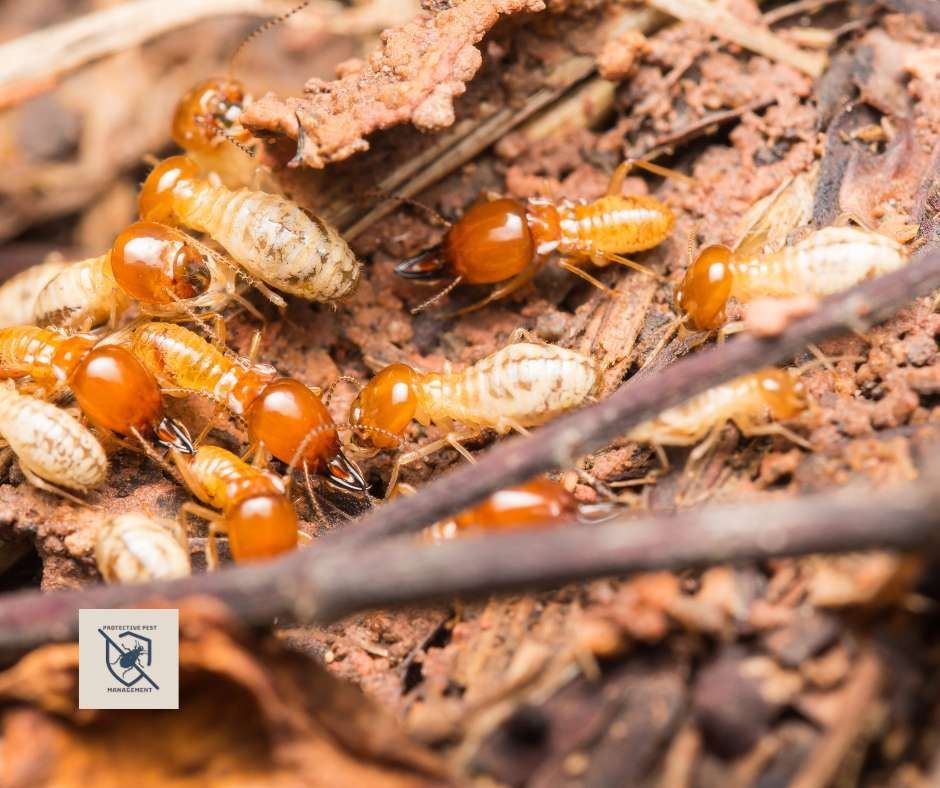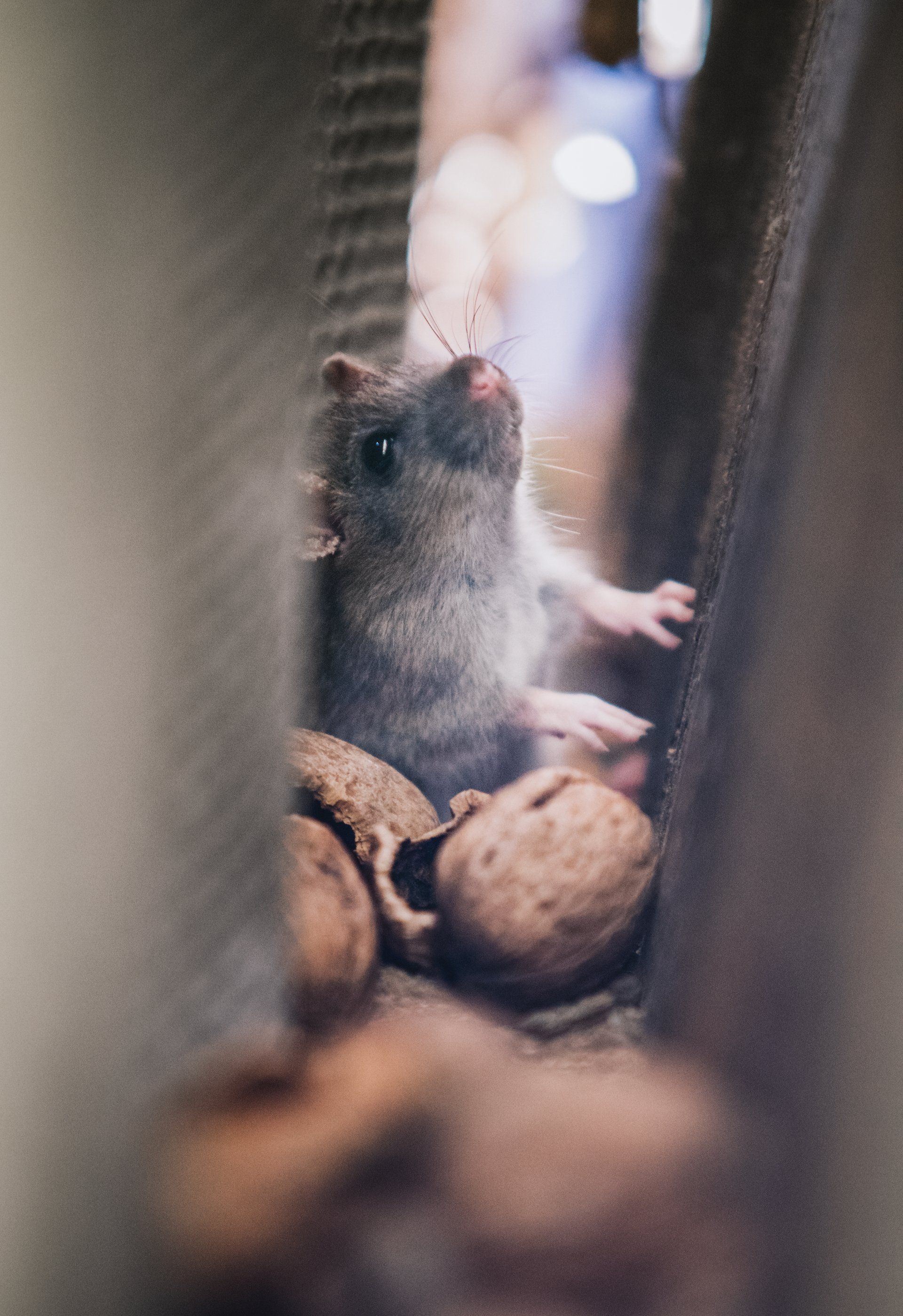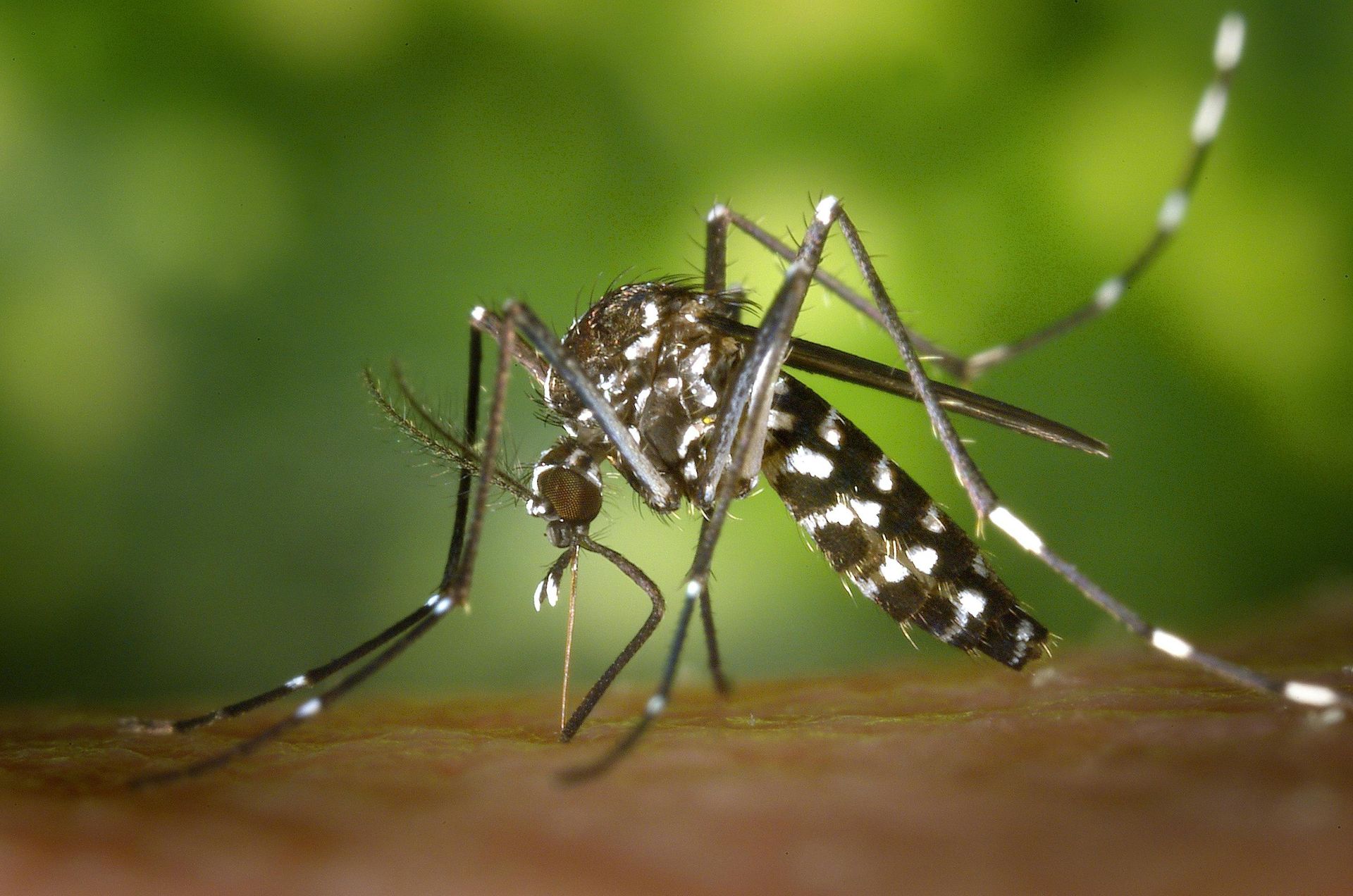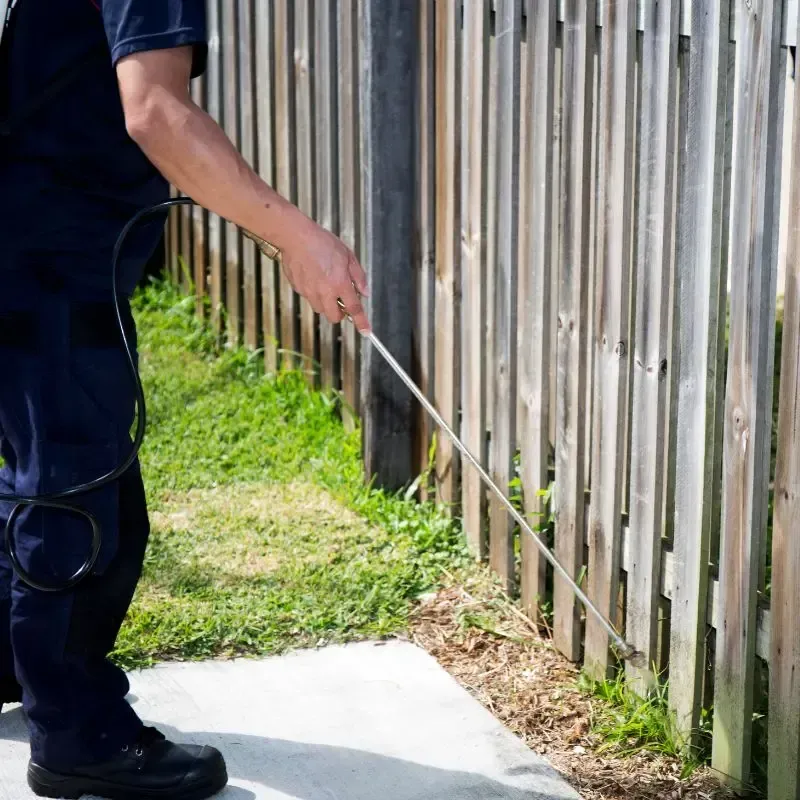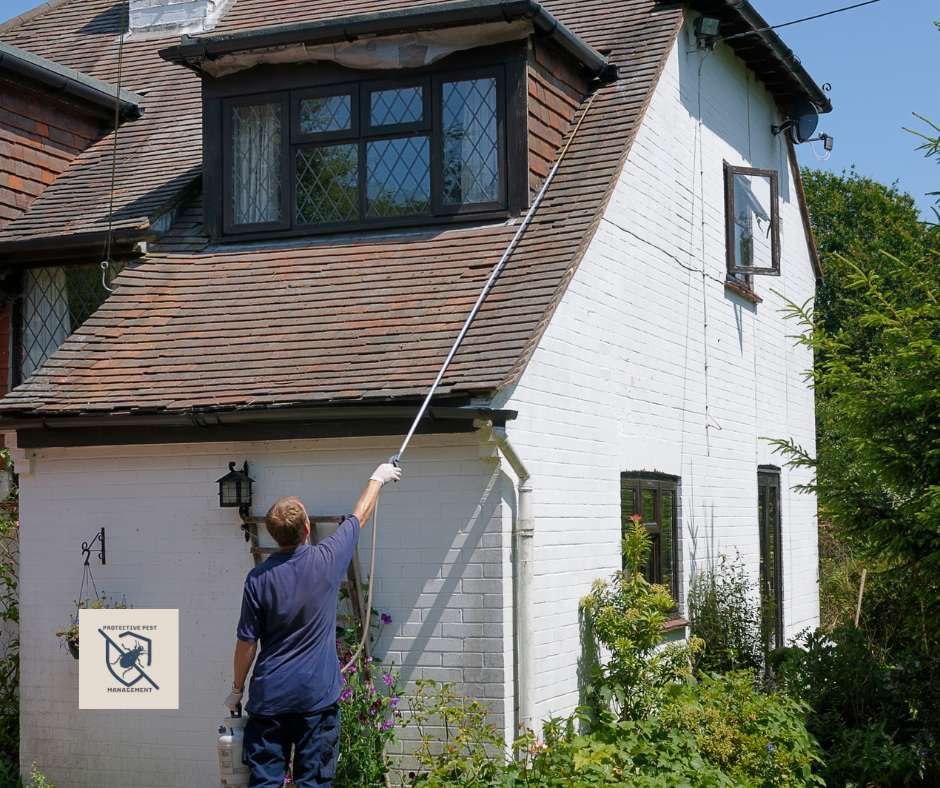Top 7 Invasive Pests To Watch Out For In Johnstown, PA
As a local pest control company, we have seen new invasive insects entering the Johnstown area. Some are nuisances threatening to displace and destroy our native species and ecosystems. Some harm people and pets, while others cost billions of dollars due to their destructive natures.
This guide will help you spot pests near your home or business and identify which could be a problem in our area.
In This Article (Table of Contents)
With the changing seasons in Johnstown, PA, the list of unwelcome visitors also change. Invasive insects are not just a nuisance; they are a threat to our local ecosystem, our economy, and sometimes our health. Protective Pest Management is committed to keeping the community informed about these pests and providing solutions to manage them.
What To Do If You Suspect You Have An Invasive Pest
Spotting an unfamiliar bug can be alarming. If you think you've encountered any of the invasive pests mentioned in this article, don't hesitate to take action. Contacting the Pennsylvania Department of Agriculture, reporting the sighting to iMapInvasives, and contacting a
local pest control service like Protective Pest Management can make all the difference in preventing the spread of these invasive species.
7 Invasive Insects To Watch For In Johnstown, PA
In Johnstown, PA, there are a few invasive insects that everyone should be on the lookout for. Let's start with one you might have seen already: the Spotted Lanternfly.
1. Spotted Lanternfly (Lycorma delicatula)
The Spotted Lanternfly is a bug with pretty spotted wings, but don't let that fool you – it's not a good guest. It loves to suck the sap from plants, destroys trees and crops, and poses a serious economic threat.
What they look like
The Spotted Lanternfly is a striking insect with distinct markings that change throughout its life cycle. Nymphs start as black with white spots and grow to develop a red patch before maturing into adults with grey wings and red underwings.
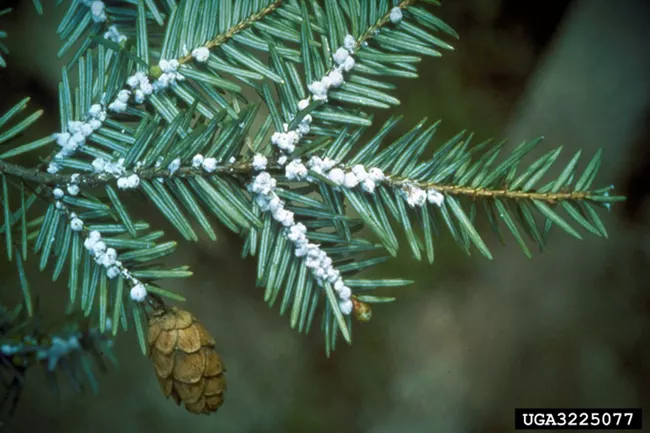
The stages of the spotted lanternfly. Source: NPS
Habits
These pests prefer to feed on the sap of various plants, with a particular taste for grapevines and hardwoods.
Why they are dangerous
Lanternflies pose a significant threat to agriculture, particularly vineyards, and can also lead to the growth of sooty mold due to the honeydew they excrete.
What to do if you think you see them
If you spot a lanternfly in Johnstown, PA, it is crucial to report it to the authorities and seek professional pest control assistance.
2. Hemlock Woolly Adelgid (Adelges Tsugae)
The Hemlock Woolly Adelgid is a significant threat to forest ecosystems, particularly in Pennsylvania, where it has caused substantial damage to eastern hemlock trees in both ornamental plantings and forests.
What they look like
These pests are known for their white filaments of wax, which the females produce. These "cottony" masses are the most noticeable signs of infestation and can persist even after the adelgids are dead. The overwintering females are about 2 mm long, black, oval, and soft-bodied, hidden under the white waxy mass.

Hemlock Woolly Adelgid. Source: NPS
Habits
The lifecycle begins with overwintering adult females laying eggs in the cottony masses from late winter to early spring. The eggs are brownish-orange and hatch into reddish-brown nymphs, or "crawlers," with a white fringe, which mature by late September.
Why they are dangerous
According to Penn State Extension, Hemlock Woolly Adelgids damage trees by inserting their mouthparts into the base of the needles and extracting plant fluids, leading to reduced tree health and potentially death in severe infestation.
What to do if you think you see them
Management is most effective in late September through October using registered insecticides. Soil injection of systemic insecticides may also be necessary for large trees. Always handle pesticides with care and follow the safety precautions on the label
If you suspect a Hemlock Woolly Adelgid infestation in Johnstown, PA, it is crucial to contact the Pennsylvania Department of Agriculture or a local pest control service like Protective Pest Management for assistance.
3. Asian Longhorn Beetle (Anoplophora Glabripennis)
The Asian Longhorn Beetle (ALB) is an invasive pest that severely threatens hardwood trees. Unlike the Japanese Beetle, which primarily damages leaves and flowers, the ALB can cause more severe damage by burrowing deep into the tree's heartwood.
What they look like
Their stark black bodies can identify ALB with white spots, and their long antennae are banded with black and white. They have a life cycle that includes egg, larva, pupa, and adult stages, each with distinct characteristics.

Asian Longhorn Beetle. Source:
USDA
Habits
These beetles lay eggs in the crevices of tree bark, and the larvae tunnel into the heartwood, disrupting the tree's vascular system. The feeding habit of their larvae is particularly destructive, as it can eventually kill the tree.
Why they are dangerous
The ALB is dangerous because it has the potential to devastate forest ecosystems, negatively impact the timber industry, and reduce biodiversity. In Pennsylvania, where forestry is an integral part of the economy, the presence of ALB could be incredibly damaging.
What to do if you think you see them
If you suspect an ALB infestation, it's crucial to report it to the appropriate authorities, such as the Pennsylvania Department of Agriculture or the USDA. Early detection and rapid response are vital to controlling this invasive pest.
Explore the Pennsylvania Department of Agriculture or other reliable resources for information on invasive insects to watch out for in Johnstown, PA, and advice on how to get rid of invasive pests. If you are in the Johnstown area concerned about invasive insects threatening your trees, consider contacting
Protective Pest Management for expert advice and services.
4. Brown Marmorated Stinkbug (Halyomorpha halys)
The Brown Marmorated Stinkbug, an unwelcome guest from Asia, is known for its damaging effects on fruit, vegetable, and other crops. It's not just a farmland nuisance; these stinkbugs also invade homes, seeking cozy overwintering spots as the weather cools.
What they look like
Adults are shield-shaped and about 17 mm long, with a mottled brown color. They're distinguished by unique bands on their antennae and a pattern on the back part of their wings. Their eggs are light yellow to red, laid in clusters under leaves.
Habits
In Pennsylvania, they typically have one generation per year. They begin life as small, black, and red nymphs, going through five growth stages before adulthood. As the cold approaches, adults seek out places to overwinter.
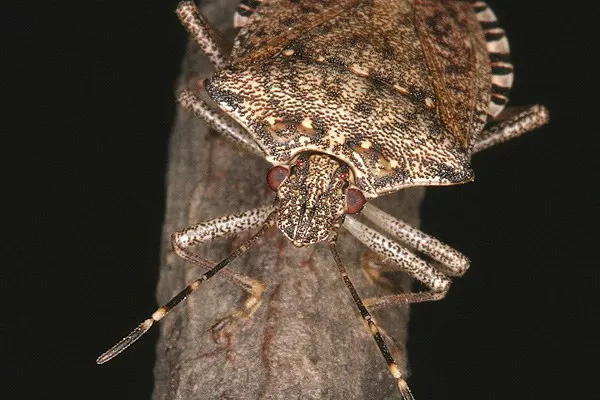
Brown Marmorated Stinkbug. Source: PennState Extension
Why they are dangerous
Their voracious appetite for a wide variety of host plants can lead to significant agricultural damage, affecting both the economy and the environment.
What to do if you think you see them
If you spot these stinkbugs, report them to local agricultural authorities or contact a pest control service to discuss management options. Protective Pest Management offers services tailored to control and prevent invasive pests in your area.
5. Spongy Moth (Lymantria Dispar)
The Spongy Moth, formerly known as the gypsy moth, is a notorious pest responsible for the defoliation and death of millions of oak trees and other tree species in Pennsylvania. While oaks are their preferred hosts, Spongy Moth caterpillars do not discriminate much, feeding on a wide array of trees and shrubs, which can lead to significant ecological impacts.
What they look like
Spongy Moth caterpillars can be identified by their distinctive yellow and black heads and hairy bodies, which have five pairs of blue spots followed by six pairs of red spots. This coloring makes them recognizable among other caterpillars and is visible throughout their lifecycle stages from larvae to adulthood.
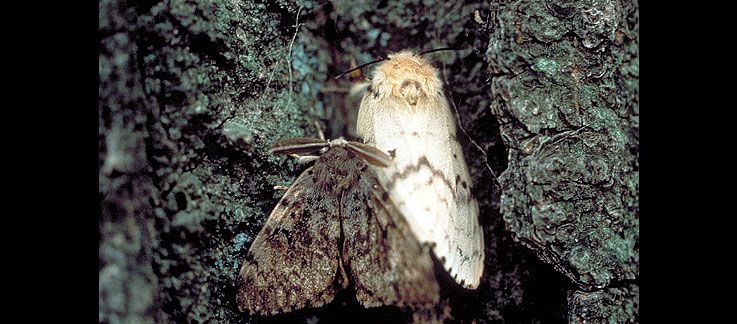
Spongy Moth. Source: U.S. Department of Agriculture
Habits
The Spongy Moth has one generation per year in Pennsylvania. Females lay light tan egg masses on various substrates, which hatch the following spring. The caterpillars are voracious feeders and can strip trees of foliage, a process that usually takes more than a year to kill deciduous trees but can kill conifers in a single season.
Why they are dangerous
These moths are dangerous because their feeding habits can defoliate and eventually kill trees. The loss of foliage reduces a tree's ability to photosynthesize, which is essential for its growth and health. This can lead to the death of the tree and significantly alter the local ecosystem, affecting biodiversity and forest structure.
What to do if you think you see them
Mechanical removal of egg masses and larvae can be an effective control method for homeowners and businesses. This includes scraping egg masses into a container for disposal and using burlap wraps around tree trunks to trap and remove larvae. Insecticide treatments may be necessary when moth populations are high and threaten trees. However, homeowners should weigh the risks and benefits of insecticide use and always follow label instructions.
6. Sirex Woodwasp (Sirex Noctilio)
The Sirex Woodwasp is an invasive species native to Eurasia, first identified in New York in 2004. It was accidentally introduced to the United States through imported wood products and has since become a concern for the health of pine trees.
What they look like
The adult female Sirex Woodwasp can be recognized by its sizeable steel-blue to black body, a distinctive long ovipositor for laying eggs, and clear wings with dark veins. The male is slightly smaller and has a similar body shape but does not have the ovipositor.
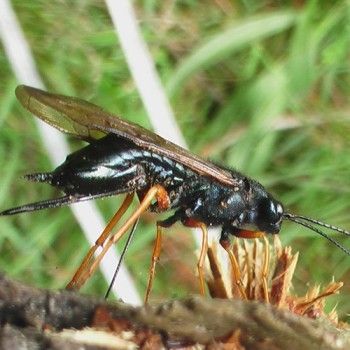
Sirex Woodwasp. Source: Invasive Species Centre
Habits
The Sirex Woodwasp lays its eggs in pine trees, and the larvae feed on the wood, which can weaken and kill the trees. This insect has a single generation per year and can fly long distances, contributing to its spread.
Why they are dangerous
This woodwasp is a threat because it damages pine trees by feeding on them and acts as a vector for fungi that can kill the trees. It poses a significant risk to forests and the timber industry. In the U.S. South & Pacific NorthWest, the projected economic damage from this invasive species to forests is upwards of $17 billion dollars, with hundreds of thousands of trees lost.
What to do if you think you see them
If you suspect the presence of the Sirex Woodwasp, report it to the local extension office or the Department of Agriculture. Experts can guide management and control methods to mitigate the impact of this invasive species.
For residents in Johnstown, PA, being vigilant about invasive insects like the Sirex Woodwasp is crucial for protecting local pine resources. If you encounter these invasive pests, consult with
pest management professionals to identify invasive insects and manage them effectively.
7. Brown Widow (Latrodectus geometricus)
The Brown Widow spider is an invasive species in the United States, notably different from its relative, the native Black Widow. Initially confined to Florida, it has spread across the southern states. While both spiders are venomous, Brown Widows are often less aggressive, and their venom is less toxic than Black Widows.
What they look like
Brown Widows are tan with white stripes as adults, with egg sacs that are round, yellow, and spiky, resembling a pollen grain or a World War II sea mine. This distinct egg sac is one of the easiest ways to differentiate them from Black Widows, whose egg sacs are smooth.
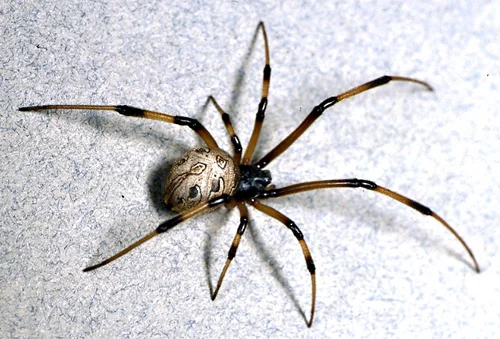
Brown Widow. Source: UC, Riverside
Habits
These spiders typically have one generation yearly, with females laying egg sacs that hatch into spiderlings. Identifying them can be challenging due to the variation in appearance as they mature from spiderlings to adults. Spiderlings of both species may look similar, but Brown Widows will have more brown on them.
Why they are dangerous
Although less venomous than Black Widows, Brown Widows can still deliver a painful bite that may require medical attention. Their presence in urban areas increases the likelihood of encounters with humans.
What to do if you think you see them
Proper identification is crucial. If you suspect you found a Brown Widow spider, contact a pest control professional for confirmation and removal. For more information on spider control, visit the spider control page provided by Protective Pest Management.
The Brown Widow's expansion is a concern in regions like Johnstown, PA, where awareness of invasive species and their management is essential for maintaining public safety and ecological balance.
How To Know What Invasive Insects To Watch For
Keeping informed about invasive insects is critical for protecting local ecosystems and your property. In Pennsylvania, a helpful tool for tracking invasive species is the iMapInvasives, an online system that allows users to report sightings and learn about invasive species. The Pennsylvania Department of Agriculture also provides resources and alerts about invasive insects threatening the state, including Johnstown, PA.
Local news outlets like
The Tribune-Democrat and
WJAC are valuable for staying updated on regional developments concerning invasive pests. They often report on local sightings and infestations, providing the community with essential information.
Lastly, contacting local pest management services is a proactive step in identifying and dealing with invasive insects. These professionals can offer expert identification, advice on prevention, and treatment options to safeguard against these pests. For those in Johnstown, PA, Protective Pest Management is your local expert for handling invasive pests. We help identify the pests, give you tips to prevent them, and treat any infestations.
Contact us to get rid of your pest problems in Johnstown, PA!
